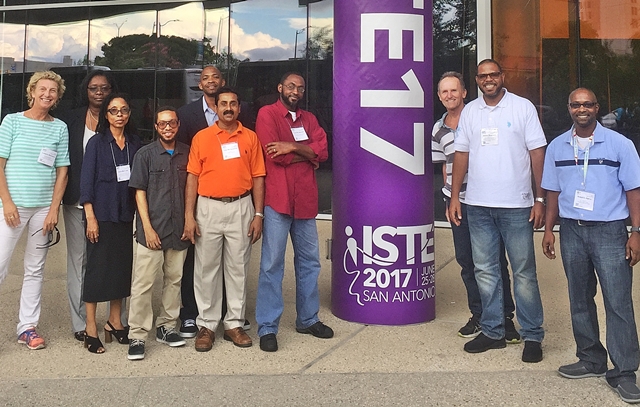PHILIPSBURG, Sint Maarten — Recently staff representing the majority of St. Maarten school boards attended the ISTE conference in San Antonio, Texas.
This conference focused on innovative integrated technology in education. Every year more than 20,000 educators from all over the world come together sharing good practices and showing the newest developments in the area of education and technology.
The local school boards SVOBE , FAVE, SKOS, Public Schools, Seventh Day Adventist and Hillside Christian schools acknowledge the wealth of information available at ISTE and invested in sending representatives to San Antonio. Foresee Foundation, an independent non-profit foundation supporting innovative educational projects, also attended and was delighted to see how the number of local St. Maarten participants has grown over the years.
As often said these days, in education we are training young people for jobs who do not exist as yet. A clear example is the role that a number of these St. Maarten educators preparing for new tasks. To successfully implement technology throughout the schools is a very challenging job whereby educational leaders have recognized the necessity of creating new job roles where specialist educators guide schools, students and staff to become better equipped.
With projects in schools, such as the public school iStep project , the DigiKidz and DigiTeenz programs and the C-TEC conference, everybody is encouraged to get engaged in the use of technology in the classroom and even bring it also beyond the four walls of the building as learning can take place in a very flexible manner at any time and at any place. This will allow for more flexibility in terms of planning, personalizing learning and equal opportunities for students.
The ISTE conference was a big eye-opener whereby lots of valuable ideas were taken along to be implemented at the respective schools. Out of the more than 500 exhibitors displaying their products and over 1,500 workshops to choose from, the most popular themes focused on innovative active learning, creating and designing learning with an emphasis on coding/programming/robotics, virtual learning and augmented reality, 3D printing, collaboration through social media, digital literacy, citizenship and safety, gamification in education and BYOD/ 1:1 devices (one device per student). The latter discusses the implementation, the pros and cons of students bringing their own devices and/or the alternative of school boards/school districts investing heavily in purchasing computers, laptops, tablets, and setting up strong and secure networks which can guarantee the amount of data traffic while securing privacy. This all needs to be done within the context of preparing and training staff and students in digital citizenship, literacy and internet safety.






























